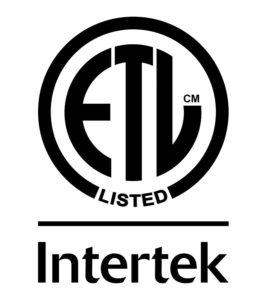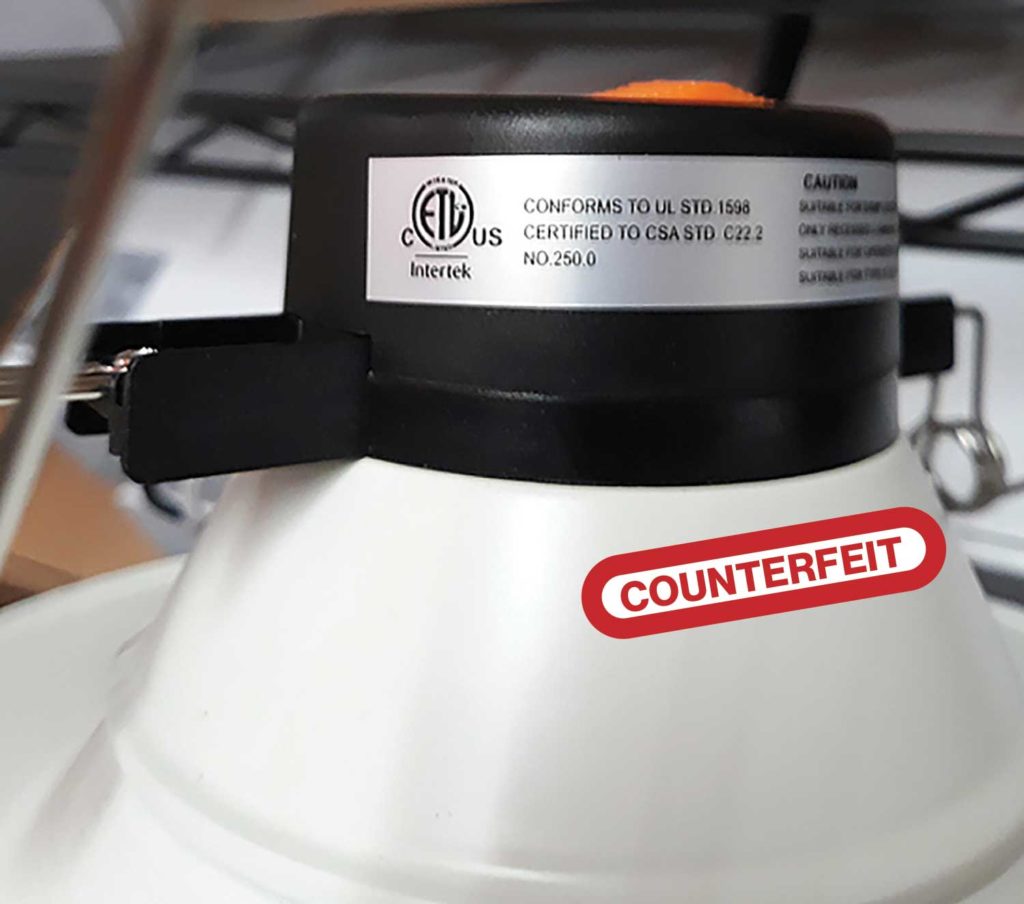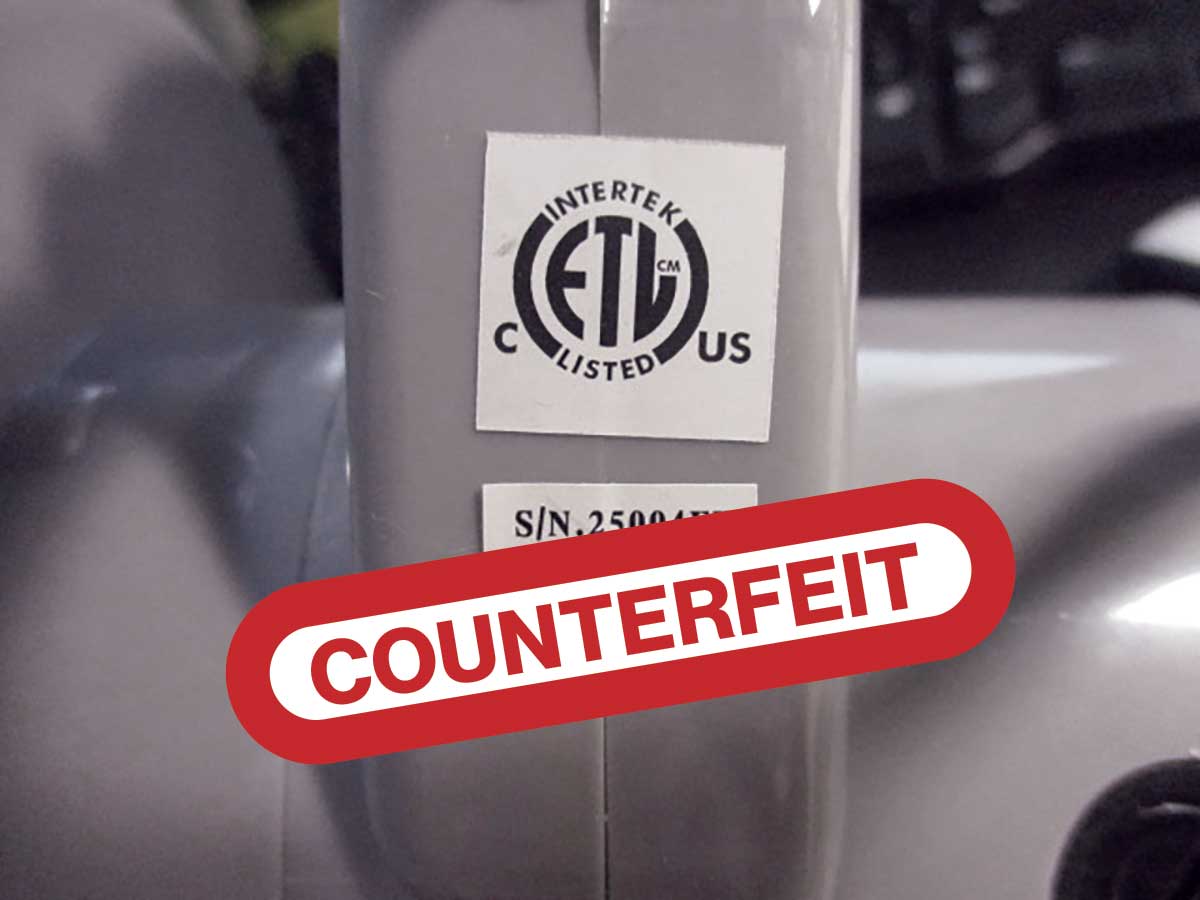In the United States, most electrical equipment is tested and certified by a Nationally Recognized Testing Laboratory (NRTL) to demonstrate compliance to applicable safety standards, regulations, and codes. Reputable manufacturers go to great effort to acquire certification to demonstrate the safety of their products. However, less reputable manufacturers may forego testing and certification, using counterfeit marks to give the illusion that their products are on par with competitive products, when in fact, they could be dangerous and of unknown quality.
Products bearing counterfeit certification marks represent a genuine danger. They can cause significant harm, injury, or death and pose a risk of significant property damage. Inspectors and Authorities Having Jurisdiction (AHJs) are responsible for ensuring equipment and installations in the workplace are properly certified and meet applicable codes, so it’s important to know how to identify a suspect certification mark. The following tips can help.
- Familiarize yourself with legitimate certification marks. OSHA provides a list of all NRTLs and their marks. Well established marks have been around for 100+ years and are associated with NRTLs that are heavily involved in the development of standards and codes. Some NRTLs have limited scopes and are seen in the field infrequently. If it isn’t a mark you see on a regular basis, check that the organization is listed and approved to certify the product type.
- Pay attention to details. Suspected counterfeit certification marks are often easy to spot. Just as disreputable manufacturers may not be interested in investing time and expense to have products tested and certified, they often do not invest in creating good counterfeit marks. Like their products, these marks are often poor quality. They include things like misspellings, blurry images, crooked applications, missing components, spelled-out names of certification, incorrect product descriptions, missing control numbers, or other obvious deviations from registered, legitimate marks.
- Certification marks should be accompanied by a control number that links the product back to its manufacturer and the factory that produced it. If the control number is missing or contains the wrong elements, it is not an authorized mark and is likely counterfeit.
- Verify product listings online. OSHA requires each NRTL to maintain Directories of Certified Products that can be searched by manufacturer, model name or number, certification standards, and authorized marks. If you don’t find a product in the relevant directory, you may have a counterfeit. However, you should always check with the NRTL, as directories are actively updated in real time and there may be brand names that aren’t easy to pinpoint within the directory. Be assured, all NRTLs will investigate and confirm marks are legitimate.
What should you do if you do encounter a counterfeit or suspicious certification mark? In addition to not allowing the product to be placed into service, you should reach out to the NRTL whose mark is in question. OSHA requires all NRTLs to have internal processes to investigate counterfeit marks, and every suspicious mark reported to the NRTL is tracked. If the mark is found to be unauthorized or counterfeit, the NRTL will take actions, such as public notices on their website, press releases, or other relevant public notification options.


NRTLs are working to combat counterfeiting, beyond investigations and actions against offenders. Efforts to reduce counterfeit marks are continually evolving and currently include: participation in industry working groups; use of difficult-to-duplicate holographic labels; electronic certification marks; and restricting access to high-resolution artwork and imagery necessary to produce certification marks.
Many NRTLs are members of the Testing, Inspection and Certification (TIC) Council’s Anti-Counterfeiting Committee, a global effort that provides several resources: a video overview of counterfeit marks, a Member Mark Reference Guide, and a centralized form to report counterfeit marks. All claims received through the form are forwarded to the applicable NRTL for investigation.
Most manufacturers have their products tested and certified. Intentional counterfeiting represents a small percentage of products, but the risks they represent must be taken seriously and dealt with swiftly. There are many stakeholders who share responsibility in keeping products with counterfeit certifications off the market: federal and state governments, Customs and Border Protection, law enforcement, industry associations, reputable manufacturers, NRTLs, inspectors, and AHJs. We all must work together to rid the market of these potentially dangerous products.











Find Us on Socials